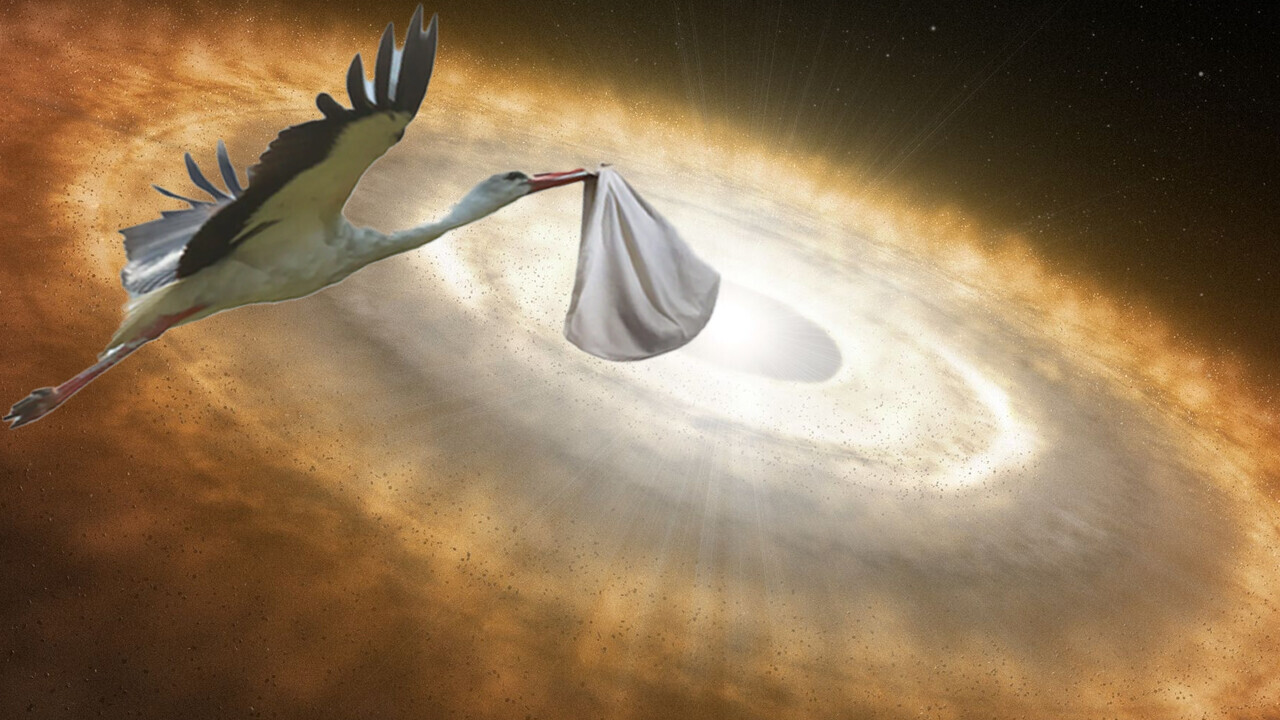
Did you know Neural is taking the stage this fall? Together with an amazing line-up of experts, we will explore the future of AI during TNW Conference 2021. Secure your online ticket now!
A team of researchers at the University of Leeds recently made the startling discovery that many observable protoplanets are surrounded by the raw molecules necessary for life.
Planets such as Earth are formed when the gravitational pull of a star captures swirling clouds of dust and gas. Over time, the clouds become disks. And those disks eventually gain enough mass to become planets.
The Leeds team managed to get a good look at several protoplanetary disks using incredible new wave detection methods which allowed them to detect the specific light frequency of individual molecules hundreds of light years away.
Per a university press release:
The research team was looking for three molecules—cyanoacetylene (HC3N), acetonitrile (CH3CN), and cyclopropenylidene (c-C3H2) – in five protoplanetary disks, known as IM Lup, GM Aur, AS 209, HD 163296 and MWC 480.
The protoplanetary disks range between 300 and 500 light years from earth. All of the disks show signatures of on-going planet formation occurring within them.
Astonishingly, the researchers found the presence of all three molecules in four out of the five protoplanets they surveyed. And in greater amounts than they’d initially anticipated.
The new findings have caused the astrophysicists responsible for the study to reevaluate how life-seeding works in light of the potential presence of this unexpected glut of precursor molecules.
While these findings certainly don’t demonstrate life outside of Earth, they do show that the necessary raw ingredients are available in relative abundance in 80% of the protoplanets investigated.
According to the press release:
Importantly, the disk regions in which the molecules were located are also where asteroids and comets form. Dr. Ilee [the study lead] says it is possible a process akin to that which may have helped to initiate life on Earth could also happen in these disks—where bombardment by asteroids and comets transfers the large organic molecules to the newly formed planets.
Dr. Walsh [an astrophysicist who worked on the study] added: “The key result of this work shows that the same ingredients needed for seeding life on our planet are also found around other stars. It is possible that the molecules that are needed to kick-start life on planets are readily available in all planet-forming environments.”
You can check out the full study here.
Get the TNW newsletter
Get the most important tech news in your inbox each week.




